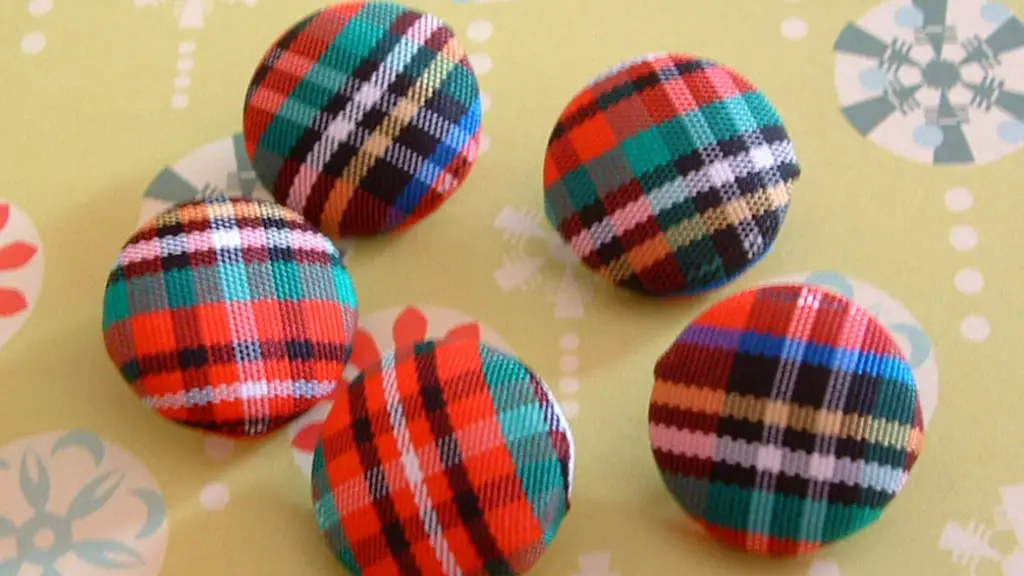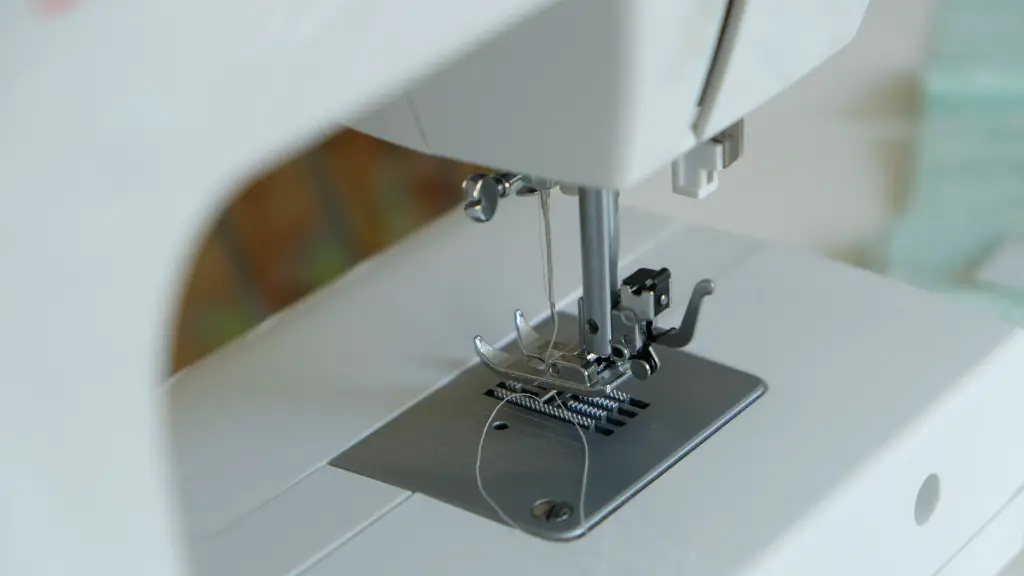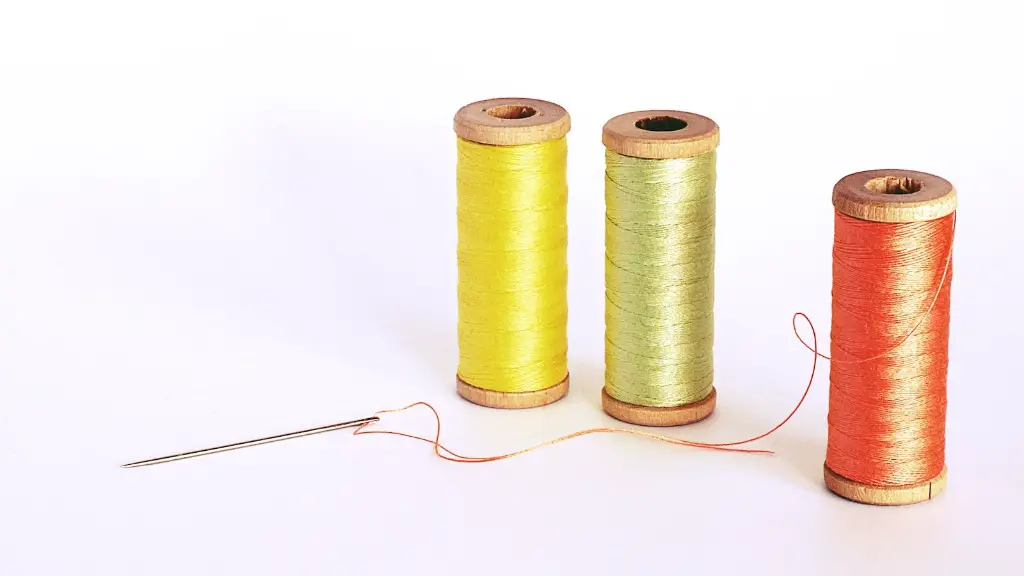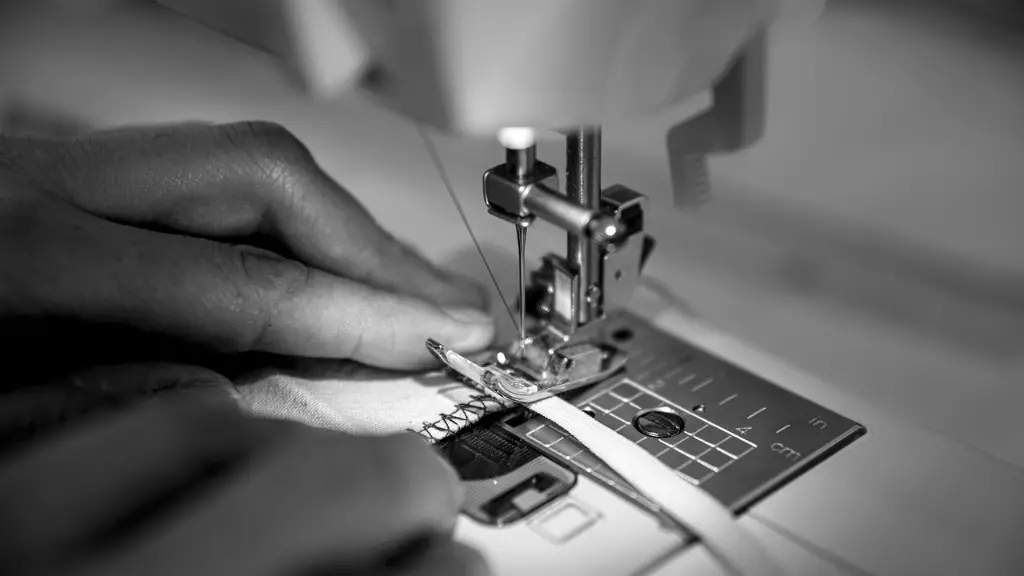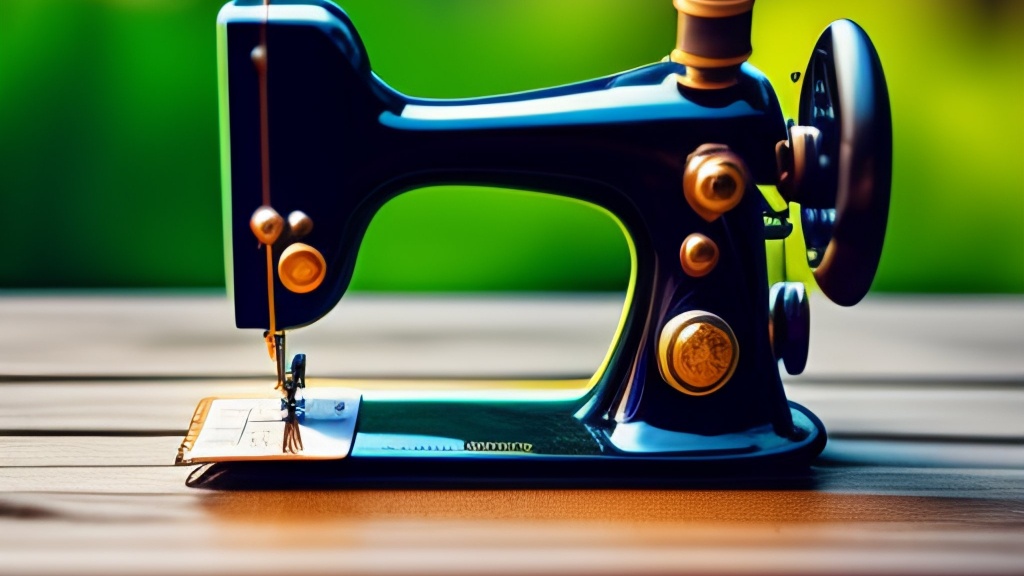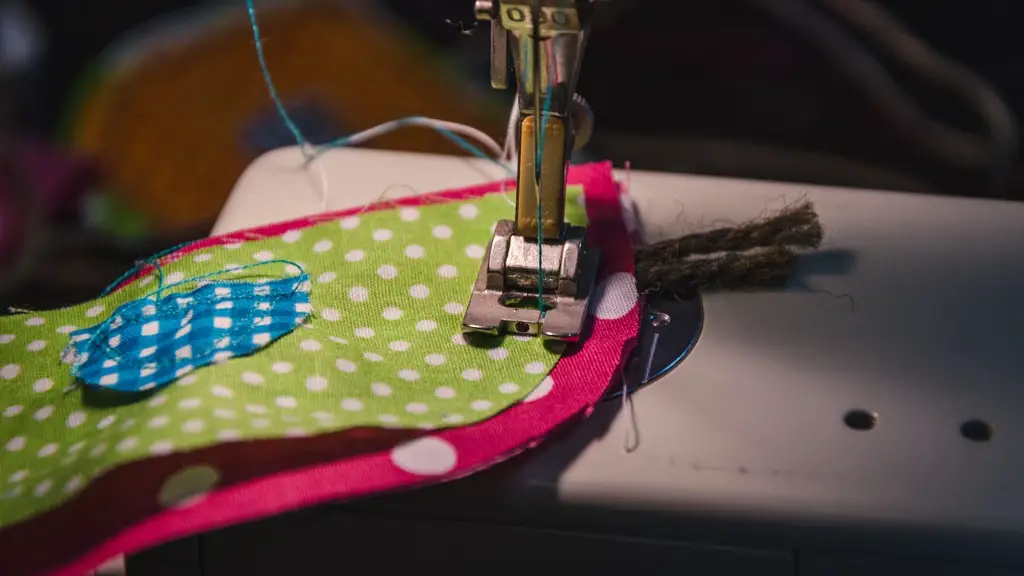Required Supplies
Working on a patchwork quilt without a sewing machine is a daunting task, but with the proper supplies and knowledge, it can be a relatively easy and enjoyable project. The most important items you will need are fabric, scissors, and a needle and thread. You will also need to buy some quilt batting, which is the middle fabric layer within the finished quilt. Additionally, you will need an iron, pins, and a quilting hoop or frame for the task.
In terms of fabric, the amount you use depends on the size of the quilt you want to make. Ultimately, you should use at least two different fabrics that complement each other so that the quilt looks finished and put together. Additionally, you should determine the size of the patches you want as early as possible so you know how much fabric to buy.
Preparing the Pieces
After you acquire your materials, you will next cut out your desired quilt pieces. You should use the inner edge of the 2 pieces of fabric as a guide or measurement tool during the cutting process. Additionally, the size of the quilt batting should match the outer edges of the 2 pieces of fabric. Using scissors, cut the fabric apart and make sure all of your pieces are the same size.
Now that the pieces have been cut, you can use the iron to press all of the edges to make sure they are flat and straight. After that, place the 2 pieces of fabric together, face-to-face, in the order that you want the finished quilt to look. Then, you will move on to the pinning step.
Pinning and Sewing
When it comes to the pinning process, it is helpful to use a quilting hoop during the procedure to ensure the patchwork pieces stay in place. To begin, place the 2 pieces of fabric inside the quilting hoop and make sure they are laid out in the order you desire. Pin the fabric together with the quilting hoop to prevent it from moving during the sewing process.
Now that the pieces are pinned together, it’s time to start sewing. First, cut a strand of thread that is a few inches longer than you need. Make sure the end of the thread is knotted so it doesn’t come undone. Next, use a regular sewing needle to hand sew the pieces together, making sure to go through the middle of each patch. To secure the ends, use a knot.
Assembling the Quilt
After the pieces of the patchwork quilt have been connected together, it’s time to start assembling the quilt. To begin, place the backing fabric on the bottom followed by the quilt batting. Then, place the patchwork pieces of the quilt directly on top of the batting. Secure the fabric in place with pins and make sure to push the pins all the way into the batting.
You can then flip over the patchwork quilt and start sewing the pieces together. Begin by knotting the end of the thread and then sew a straight line down the side of each patch. Move around the quilt in such a way that the overall stitching pattern looks nice and even. Pull the thread tight so that the edges of the patchwork are secured in place.
When you are finished sewing the patchwork pieces together, secure the threads with a stitch or knot. Then, cut off any extra fabric from the batting and backing pieces so that the edges are even.
Finishing Details
In order to create a polished looking quilt, it is important to finish with neat details. If you need to, you can apply some hair spray or spray starch to the fabric so it is easier to press. Use an iron to get rid of wrinkles and bumps, as well as further secure the seams. Finally, go over the whole quilt with a lint roller to make sure all of the stray fabric fibers have been removed.
When you’re done, your quilt is ready to use or give away as a gift. The fact that you made it without a sewing machine gives it an extra special touch. Plus, the time and effort that you put into the project is sure to be admired.
Binding the Quilt
After the quilt has been pieced together and the details have been finished, the last step is to bind the quilt. To begin, cut a length of fabric that is equal to the length of all 4 sides of the quilt plus an extra 4 inches. If a patchwork pattern is desired, cut the binding into 9- inch strips. Place the binding strips along the edges of the quilt and pin them in place. Make sure that ¼ inch of the binding is folded over the edge of the quilt on each side.
When it comes to biding the quilt, there are two different techniques that you can use. The first is to hand sew the binding fabric to the quilt. To do this, use a regular sewing needle and a strand of thread that is a few inches longer than you need. Begin at one corner of the quilt and sew the binding to the back side of the quilt. As you are hand sewing the binding, make sure you catch the edge of the quilt in the stitching.
The second way to bind a quilt involves using a sewing machine. This method is faster and cleaner than the hand stitching technique. To bind the quilt with a machine, use a zig zag stitch set to a wide width. Sew the binding to the back of the quilt and make sure to catch the edge of the quilt in the stitching. Once you have finished the stitching, trim off any excess threads or fabric.
Adding a Label
The final touch on making a patchwork quilt without a sewing machine is to add a label. Having a label on the quilt will document the date and year that it was completed, as well as any other important information you want to include. You can purchase pre-made craft labels or make your own with fabric. To do this, cut out a rectangle of fabric, draw or write whatever information you want to include, and sew the label onto the quilt.
At this point, you have successfully completed the quilt without using a sewing machine. What may have seemed like a daunting task can be both enjoyable and therapeutic. Plus, making a quilt without a sewing machine is a great way to practice traditional hand sewing skills.
Using a Layering System
Using a layering system when working on a quilt is a great way to keep the project organized and ensure that all areas of the quilt are even. To begin, place a large piece of cardboard or foam board on a flat surface. Then, place the quilt backing, batting, and quilt top on the board in that order. The batting should be centered, while the backing and quilt top should be slightly larger than the batting in order to extend out over the edges. Secure the pieces to the board with pins and you are ready to start the patchwork.
When you are piecing the quilt, use a quilting hoop and keep the fabric pulled tight. Make sure to pin the pieces together securely so that everything stays in place. If using two fabrics, make sure to keep them facing towards each other so that both fabrics are showing in the quilt.
When the patchwork is complete, it’s time to assemble the quilt. Place the quilt top layer down on the board and then add the batting. After that, place the quilt backing on top. Make sure all of the layers are evenly lined up and that they extend past the edges of the quilt. Finally, place the pins through all of the layers to keep everything in place.
Using a Quilting Frame
Using a quilting frame when making a patchwork quilt without a sewing machine is a great way to ensure uniformity and accuracy in the stitching. Additionally, the quilting frame holds the quilt securely in place, making it easy to work with. To begin, place the quilt in the frame, making sure that all 4 sides are even. Then, hold each side of the frame and make sure that the quilt is taut and evenly stretched.
When you are ready to start stitching, use a regular sewing needle and a strand of thread that is a few inches longer than you need. Begin stitching in the middle of the quilt, going in a straight line down the side of each patch. Once you have finished stitching, use a knot to secure the threads. For a more intricate stitching pattern, use a quilting needle and a quilting thread in a variety of colors.
After the quilt is finished, remove it from the quilting frame and secure all of the threads with a knot or stitch. Then, you can add any finishing details you desire and bind the quilt in order to complete it.
Using a Quilting Template
If you are looking for a more precise way of piecing your patchwork quilt together, a quilting template can be used. Quilting templates are plastic or paper quilting guides that help create uniform patchwork pieces. To use the template, trace around it with a pencil on the chosen fabric in order to create the desired size and shape. Then, use scissors to cut out the pieces and assemble the patchwork as usual.
Quilting templates come in a variety of shapes, such as squares, rectangles, triangles, and circles. The templates can also be stacked to create a more intricate and creative pattern in the quilt. Additionally, the templates come in different sizes so that you can achieve the desired size of the quilt.
Using a quilting template is a great way to get a more uniform and professional-looking patchwork quilt without having to use a sewing machine. Plus, the template makes it easier to piece the patches together and provides a high level of accuracy.
Tips and Tricks
The process of making a patchwork quilt without a sewing machine may seem intimidating, but with the right tips and tricks, anyone can do it. Before you begin, read through the instructions one last time to make sure you are prepared. Additionally, make sure you have the right supplies and that you understand the process before diving into the project.
When it comes to sewing the patches together, it is important to keep the stitches consistent. Additionally, use a piece of fabric underneath the quilt for a softer surface to sew on. This will help keep the patchwork pieces in place and provide a stable surface for sewing.
Finally, it is important to remember to take your time. Making a patchwork quilt without a sewing machine is a time-consuming project and it is important to be patient and have a good attitude. Working slow and steady will give you the best result and you will be proud of the quilt
